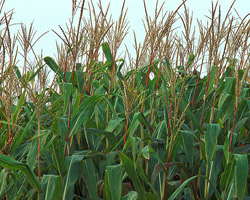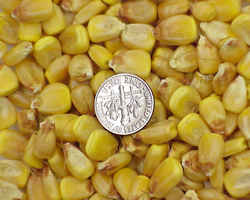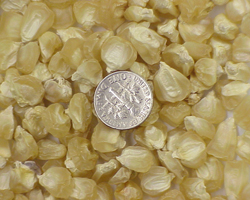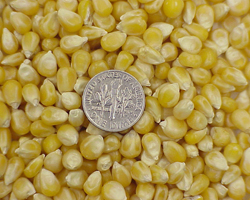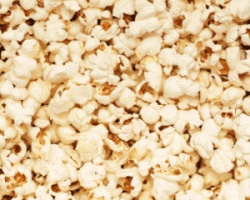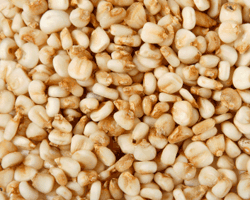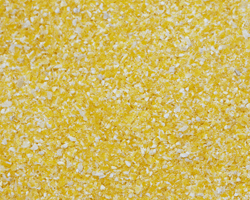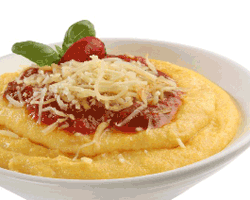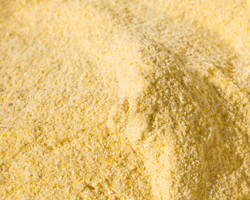Here’s a photo gallery of different forms of corn.
|
Corn Growing in a Field Cornstalks can vary in height, from as little as 2-3 feet at maturity to a world record height of over 30 feet tall (New York recorded a new record-breaking height at 45’ in 2017). Most common varieties are 6-8 feet tall when ready to harvest, though some grown for silage (where stalks and leaves are valued) may be 14-16 feet tall. |
|
|
Dent Corn Dent corn is so-called because of the dent, or dimple, that forms in the top of each kernel as it begins to dry out. Also known as field corn, dent corn is the work-a-day corn that’s used for animal feed, for making corn syrup, and for everything from fuel to biodegradable plastics. Dent corn is higher in starch and lower in sugar than sweet corn. |
|
|
Sweet Corn Sweet corn is picked when immature, at what’s called the “milk stage,” and is enjoyed as a vegetable, rather than being left to dry and consumed as a grain. Sweet corn always has an even number of rows. Count them and see for yourself! |
|
|
Popcorn, unpopped Grains with a hard, moisture-resistant hull surrounding a dense pocket of starch will pop when subjected to heat, because steam builds up inside the hull. While some other grains, like amaranth and sorghum, can also pop, popcorn is the most “explosive.” Not just any corn will pop – popcorn is cultivated as a special variety. |
|
|
Popcorn, popped According to the Popcorn Board, most popcorn comes in two basic shapes when it’s popped: snowflake and mushroom. Snowflake is used in movie theaters and ballparks because it looks and pops bigger. Mushroom is used for candy confections because it doesn’t crumble. |
|
|
Hominy Soaking corn in an alkali solution makes its B vitamins and amino acids more bioavailable, and (if lime-water is used as the alkali) adds calcium. The resulting corn is known as hominy, or nixtamal. Hominy can be eaten as is, coarsely ground into grits, or mashed to make masa, the dough used for tortillas. The nixtamalization process may cause some bran loss, but as long as this loss is kept to the absolute minimum, hominy and masa are considered by many to be whole grains (though this is not universally accepted). |
|
|
Polenta, uncooked Polenta is a coarse meal eaten as soft mush, or as a mush that is dried and then fried. In Italy, polenta may also be made with other ingredients (farro or chestnut flour, for example)– but to most people, polenta conjures up a dish made with coarse corn meal. While polenta and grits have some similarities, polenta is usually made with flint corn, while grits are usually made with dent corn or hominy. Polenta comes in both whole grain and “degermed” (germ missing) versions, so buy carefully. |
|
|
Polenta, cooked The gelatinization of starches in cornmeal results in the smooth, creamy texture associated with polenta, as shown here. After it cools, polenta can be sliced in widges or sticks, and pan-fried or oven-baked in a little olive oil, providing a lovely base to put under stews and thick sauces. |
|
|
Corn Flour We’re used to hearing the term “cornmeal” rather than corn flour. Cornmeal is generall coarser – but corn flour also exists, and can be used in all manner of foods. Make sure to buy whole corn flour instead of degermed, if you want the goodness of the whole grain. |
Photo credits this page, from top: Cornfield – USDA (Scott Bauer);three varieties of corn with a dime – Keneth Smiciklas, Illinois State; popcorn popped, hominy, polenta uncooked and corn flour – iStock; polenta cooked – Bob’s Red Mill.

